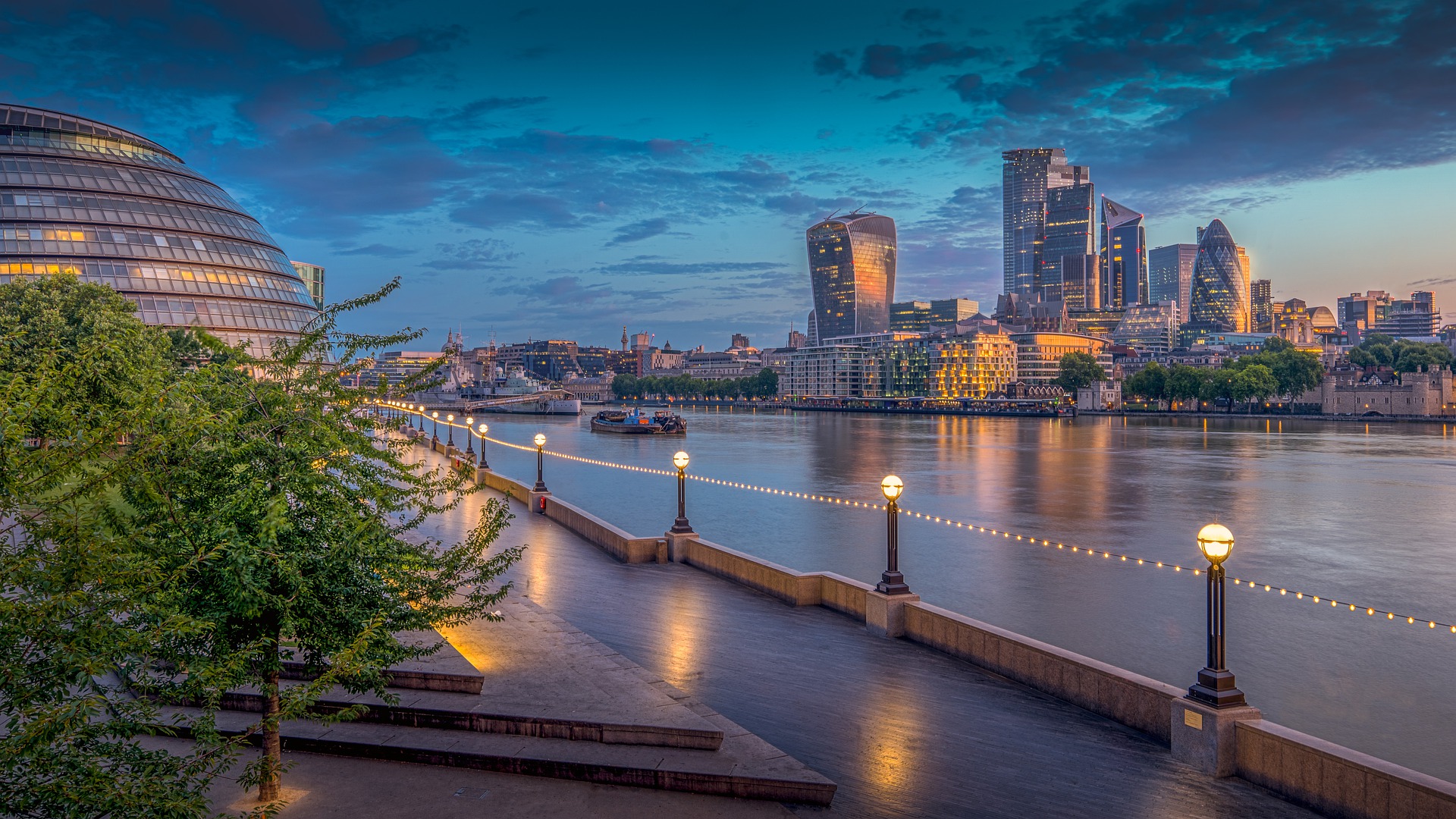The IUCN Local Action Summit took place on 3 September 2021—the opening day of the IUCN World Conservation Congress—in Marseille, France. Leaders convened to showcase and galvanise conservation efforts in cities and regions, make the case for a nature-based recovery to COVID-19, and announce ambitious action pledges for nature. The Summit included four roundtables, the first of which focused on ‘Financing the green recovery.’ A transcript of this roundtable is outlined below.
Moderator:
- Chantal van Ham, Acting Director for Europe, IUCN
Speakers:
- Veronica Scotti, Chairperson Public Sector, SwissRe
- Christophe Nuttall, Founder, R20 and Subnational Climate Fund Sponsor
- Ahmed Almalk, Director of Nature and Wildlife Reserves, Royal Commission of Al Ula
- Cyrille Barnerias, International Relations Director, French Office for Biodiversity
Roundtable transcription
Chantal van Ham (CvH): So thank you very much for joining this summit today and welcome to the roundtable on financing the green recovery. I believe that all of us gathered in this summit are convinced that the foundation of a healthy planet is a stable and rich biodiversity. But this can only be achieved if we make natural and social capital part of our global wealth and recovery actions. As we know, nature has been largely neglected in existing recovering plans. Even though nature supports the majority of our global GDP and provides many services. The recently published state of finance of nature tracks global trends in public and private investment in nature, aiming to identify opportunities. This year’s report calls for investments and Nature-based Solutions to triple by 2030 and to increase fourfold by 2050. An increase in public funding will help to fill the gap but there needs to be a significant increase in private sector investment in nature. For urban and regional planners, and decision makers, it is essential to work across disciplines and city departments to find common ground to integrate the value of nature in urban planning, design and development. This starts by creating a better understanding of the natural essence. To make the transition towards an economic model that is in balance with nature and requires solid knowledge and understanding of the linkages between environmental well-being and quality of life, as well as economic development to climate change, and monitoring the biodiversity ecosystems and their services within and around cities. We need to also develop new and unconventional partnerships to catalyse this change. We believe that the IUCN Urban Nature index but also the nature-based recovery plans are important ways for achieving this. So now with no further ado, I’m very pleased to welcome our four outstanding speakers for this discussion. The first one is Miss. Veronica Scotty, chairperson for the public sector SwissRe who is with us virtually. The next speaker is Dr. Christophe Nuttall, Founder and CEO of R20 and subnational climate fund sponsor. Then I’d like to welcome Dr. Ahmed Almalk, Director of Nature and Wildlife Reserves at Al Ula, Saudi Arabia. And Cyrille Barnerias, who is the European and International Relations Director of the French Office for biodiversity. So, I am very pleased to give the floor to you with Scotty for your opening statement.

Veronica Scotti (VS): Thanks to the IUCN for inviting me to speak at this local action summit. So, I’m happy to share a little bit, set the scene and also share a little bit on our belief as an organization, very much convinced of what Chantal is just demonstrated, the absolute importance of having a natural economic system. We believe that climate change is actually the single largest global challenge that we’re facing today. But while the world is heating up everywhere, the adaptation is actually very local. And we are way behind where we need to be, from an adaptation standpoint, to really adjust to what is going to be a much more inhospitable environment. The insurance sector has actually been working with local and global governments on these topics for a while. But there is clearly a need, more specifically in the context of better understanding this transforming bridge and the interdependencies and allows for much more upfront planning of how we increase our physical security, as well as our ability to fiscally face up to the challenges ahead of us. And we need to make sure that we bet restoration, repairs, conservation as central parts of the joint actions. As well as in the investments that are needed around infrastructures and urbanization, that nature becomes a core component on how we’re going to execute, because that will be critical to the liveability of our urban centres in the years to come. On the system level, it is our conviction that a low carbon future strictly depends on our ability to build more sustainable economies and scale up and accelerate Nature-based Solutions. These are important also for carbon removal, markets and the development of the associated financial sectors. So we can only achieve all these very ambitious objectives, if we invest sustainably in nature, and ecosystem services. And that’s why we welcome the holistic frameworks that are starting to emerge, robust monitoring that needs to go with the preservation, the conservation and investments in natural capital, and their organization of reporting. But I also want to emphasize the importance of working on effective delivery mechanisms, so that we can activate all access of society. And the reason why as a private enterprise in the financial sector we care so much about nature is very simple. We’ve been observing escalating climate events around the world, there are ample research available out there our Institute publishes every year. So it’s very clear to us this trend is only here to stay, and it’s going to get more dreadful, and we’re going to be surrounded by dozens of damaged natural world. At the same time, we know that climate has a direct correlation to loss of biodiversity, and loss of biodiversity is unaccounted for. But what we understand today is its existential value to us. When we conducted our study a year ago, and we developed a biodiversity and ecosystem index we discovered that 55% of the GDP in the world depends on healthy and intact ecosystems. And so while this is a very big part of our economic activities, we are also witnessing a loss of biodiversity. So, a nature-positive, a nature-centric economy is not just a moral imperative or conservative approach, it’s actually an economic necessity. Therefore we need to protect nature. And that’s why the company we subscribe to doing no harm. But we also need to invest more in nature, because we know that it is one of the most effective mechanisms to reduce or maybe reverse loss of biodiversity, to have effective adaptations on the ground, and to be better protected against the impact of climate change. That is particularly true when overlaid with anthropogenic developments like urbanization and over-population. But all of this only happens if the environment in which we operate is conducive to the right actions, which is why we’re excited to be members of the (…) that will be launched shortly because it allows us to actually promote right incentives and punish harmful behaviours. And it allows us also in an economic and political environment, to do the right things. For instance, under the very clear and strict timelines that the European Green Deal has set out for all of us. I think finding effective pathways and acting as a financial enabler to this right decision is important to get to the decarbonization by 2050 that is needed. And I’ll be happy to share more, maybe more concretely we are going after we hear from the other speakers. Thank you.
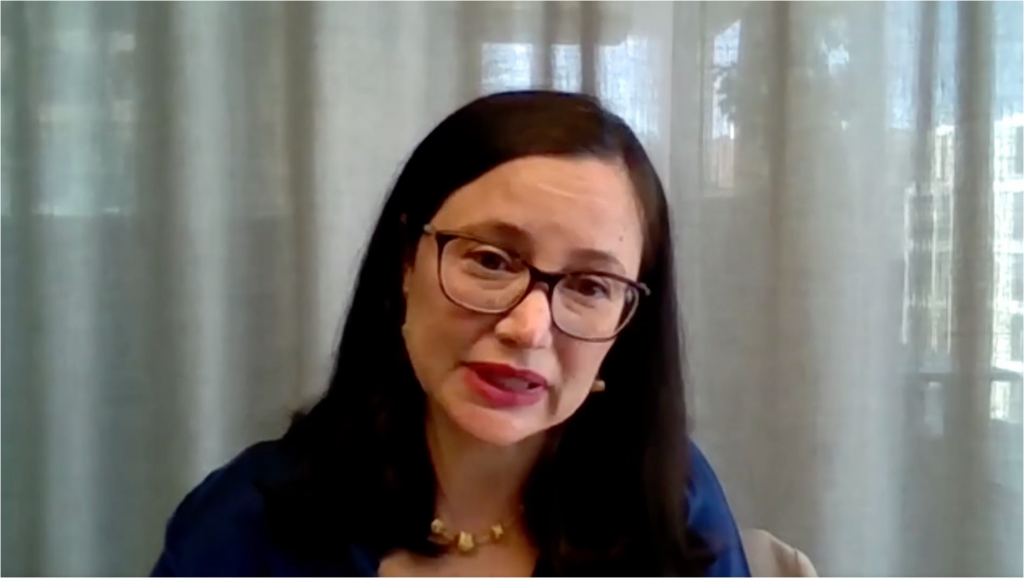
CvH: Thank you very much, Miss Scotti, for your valuable information. And we are also very pleased that you are here representing the private sector but also an incredibly important partner in mobilizing this future investment and creating this pathway towards action. Yes, we look forward to to go a bit further into this dialogue. But first, I’ll hand it over to our next speaker, Dr. Christophe Nuttall, please The floor is yours.
Christophe Nuttall (CN): Nice to meet you. So, I am representing here an alliance of different organizations, namely IUCN and R20 which is dealing with subnational authorities and, more importantly, a fund manager, which is called Pegasus capital, which is accredited by the Green Climate Fund. The whole idea emerged some 10 years ago, when I was director at UNDP, where we have been able to showcase an officially recognize local authorities as handling 75% of climate change mitigation and adaptation. And on the other side, even though they have these responsibilities, on the other hand, I would say the power to undertake climate change impact projects, such as waste management with zero waste management, and sanitation, such as energy efficiency, for example for streetlights but also energy efficiency of buildings, immobility, etc. So they have a wide range of infrastructure that they can put in their cities, which can have a huge impact, and we measure it at 75%. Those kinds of projects are within a scale of five to 75 million US dollar, in average, when you discuss with those subnational authorities, whether they are regions, cities, etc. Unfortunately, when you see on the other side, what are the financial mechanisms is at the disposal of subnational: the UN system, the Python world system, the development bank system, the bilateral finance system is not suited to really go respond to the needs of the subnational authority, you have always to go through the national authorities, and then you have a lot of politics behind. On the other side, you have also the private sector, the banks have a number of them that I’m not going to name them, unless one because he’s part of our consortium with BNP Paribas. And so, for them, it is extremely difficult to finance any project which is below $100 million, because the transaction cost for making feasibility studies is too high, to have economic return for them to investigate. So they rather invest in larger projects. So what we did, we had our own fund, which is called the subnational Climate Fund which is blended finance. This means that you have different sources of funds, where the public sector will take the risk of implementing such small scale projects. And then we will have the private sector who come in the risking, so we have two tranches. I don’t want to go into too much final details, but you have the first tranche which is taking the risk with low return on investment, which is taken by the public sector. And when I mean the public sector it is the green finance, the green founder from the United Nations to the GCF, which has agreed and has officially committed to invest 150 million US dollar in our fund, bearing in mind that we will bring the other 500 million/600 million from different investors, whether they are public, or they just be bilateral agencies. So we are talking about EIB, about the CDC, the US and others, but also the private sector who are pension funds, insurance funds for even different others. So this is an equity fund. And this fund is now operational, we have 42 countries who have adhere to this fund, which are the different municipalities and form these countries to access to the fund. Next to that, and this is why it is so blended finance, before you can convince the funds to invest in your project, you must make sure that you target two kinds of impact. First one is the climate change impact. So, we have IUCN providing all the different criteria to make sure it is a Nature-based Solution project. And on the other hand, in terms of impact, we have (…) that can measure those impact, we brought these impact, and then verify them. Above that you need to have economic return of your project. So we have what we call technical assistance funds of 28 million euros, which has been funded by also the Green Climate Fund up to 18 million US dollar, which allow us to campaign for authorities to make sure that they can at the end provide a bankable project. It is not just because you have a good idea or a good PowerPoint that’s enough. You need to have a public private partnership with a local developer, you need to make sure that you comply all with the different words and regulations of the country in interval investment, you need to build up a SPV. So special purpose where the local developer must have a PPP with the municipality, with the backstopping of the national government, and then we can start to invest so, this is where we are. And here today, we will announce a second founder exactly based on this model of blended finance, which is public private investment with a technical assistant also with the GCF, and an environmental facility where specific asset for the Mediterranean. So this is my preliminary remarks. And of course, I will be happy to respond to any specific questions. Knowing that it is a new venue. We are very happy to do it with IUCN. We do believe that as micro finance started some 15 years ago, I know it’s becoming worldwide business as usual in many banks in developing countries, including we do hope that this kind of finance mechanics, first national infrastructure will become business as usual. In the next decade, deploying the billions of US dollar budget is needed in order to deploy that green infrastructure. Thank you very much.
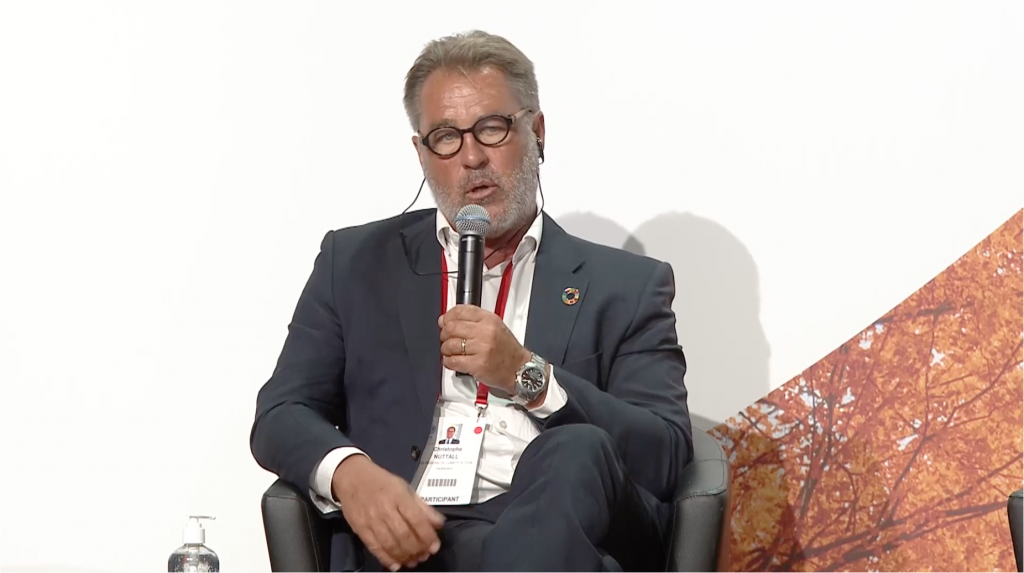
CvH: Thank you very much, Dr. Nuttall. This is indeed a very inspiring story of the new approaches to financing and this is certainly as pioneering, but we hope with you that this will become business as usual. As you rightfully point out. I would like to hand over then to Dr. Ahmed Almalk, Director of Nature Wildlife reserves. Please, the floor is yours.
Ahmed Almalk (AA): Thank you so much. Good afternoon, everyone. And thank you for giving me this opportunity to work at the summit and this amazing form. So I’m speaking on behalf of Royal Commission, for Al Ula. And I will speak about Al Ula., Al Ula is an amazing County in Saudi Arabia it is in the northwest of Saudi Arabia, and has beautiful outstanding features for nature. And host also the first UNESCO heritage sites which is called Hegra and of course in Al Ula, our strategy is to conserve both natural and cultural and heritage and we are moving forward. Also we aim to conserve 80% of Al Hegra space, which is over 20,000 square kilometers to be natural areas. And also we have declared for that already, we declared six nature reserves, which covers up to now 50% of Federal Accounting. So we have huge investment and these natural reserves. We are moving goal toward (…) for all Saudi Arabia through Saudi Green Initiative and part of this initiative is working to enhance the quality of life for Saudis of course, and we are having Saudi Green initiatives 10 million trees and over 600,000 acre of rehabilitation as well. also we are aiming to protect 30% of Kingdom Saudi Arabia space. So, this great initiatives, but to fit with Al Ula, this is our biggest and Al Ula is part of it we are seeking to have natural areas covering 80% as I mentioned, and sustainable ecosystem systems and to sustain our fragile habitats and to develop for tourists. So, for those who are investing usually in infrastructure for nature reserves and I will mention some of our efforts up to now and our aim is to move forward in the future. So, for the time being, we are having one of our nature reserves cultural and natural reserves this one is the first one to be declared. And we are having a temporary fence for nature reserve to restore the degraded habitat and enhance and thrive the vegetation and start our pilot project of reintroduction as well as we are having live on centre and I will talk later about our centre and responsibility that we have to the world as a species. Also we have a plant we are now doing state of that nursery which will contribute to our green initiative and will supply the county with all the needed plants to be planted in Al Ula and the around areas. So, we are planning to do rehabilitation with more than 200 of native species and in Al Ula. We are having the responsibility of Arabia leopard, which is a critically endangered species and we with the Royal Commission, we are the custodian for the Arabian Leopard. And for that we are having a huge investment, and we started that with very long strategic partnership with (…) and this is 10 years partnership with 20 million euros and also established the Arabian Leopard fund which is also the goal of the fund is to contribute on the conservation of Arabian leopard. So this is the situation of the Arabian Leopard fund is 25 million euros and up to 100 million US dollar. We also contribute a huge investment in the local communities and we are having local communities on board with us. So they are working with us as Rangers in our nature reserve, they are working with us as we have amazing partnership with the local communities we call them Maya where the local communities will contribute to save the environment and to save the heritage of their areas. We also put huge investment in our local eco-guides and we’ve called them our storytellers and they are working also to promote and ensure that the heritage and natural science is protected. And we call them storytellers, they are working also to promote and show the face of the heritage and natural science of Al Ula. And to conclude this, we are now having very good relation with IUCN, and the module with IUCN for staff for three years. And after that our work with IUCN is mainly to develop systems for natural areas of Al Ula and around to connect Al Ula better with the surrounding natural areas, and to also build capacity for our local communities. So this is to emphasize what we are doing now. I hope that near in the future, Al Ula will be on the map of the natural and cultural heritage. And we will come our own as we are becoming a tourist destination for both for natural and for cultural heritage. Thank you so much.
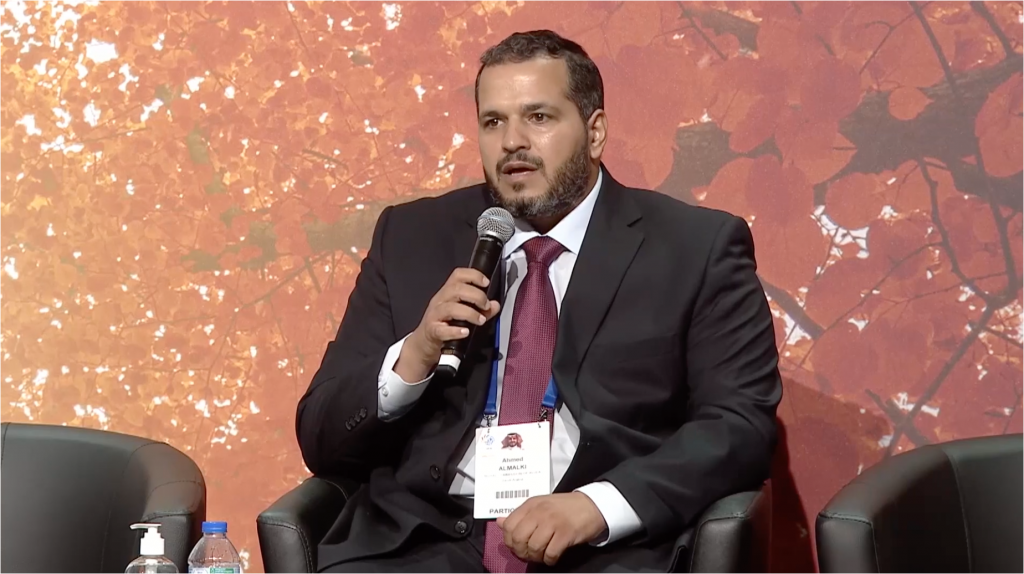
CvH: Thank you very much for sharing these wonderful stories about the fantastic work you do for Habitat Conservation and species reintroduction, as well as restoration, while mobilizing new ways of funding to do this. And IUCN is very proud with this partnership. And we also hope that this will inspire others around the world to to take similar actions. Thank you very much. So then I’ll hand over to Mr. Cyrille Barnerias of the French biodiversity agency to share his views on this topic of the roundtable for green recovery.
Cyrille Barnerias (CB): Thank you very much. Apparently, I can speak French. So I’ll switch over to French and address the financing of the green recovery. And I’d like to share with you some points that have been touched upon, in particular, the inclusion of local communities, which indeed is the subject of importance. What was mentioned is the mentality between public and private financing. And I think we won’t get far enough if we are not able to actually link up the two, which is absolutely crucial. The issue of solidarity between the territories is also a very important element. The French biodiversity office contributes through international solidarity, that is to say, by transferring financing, to overseas territories for subjects related to the infrastructure for drinking water, or sanitation. And this transfers, basically, from Metropolitan France to the Overseas Territories. This is a model that’s developing also in the area of biodiversity. But it’s a model for solidarity between the different territories of France. I’d also like to underscore the favour of the recovery, the importance of actually limiting subsidies that harm biodiversity. And at the same time, they need to increase financing that is in favour of biodiversity. They need quickly to describe what has been done in France. France has a recovery plan for ?200? billion euros, some 30% are for launching knowledge and environmental purposes, and that means 2.5 billion for University. They work with the local communities through a series of protected areas and financing those protected areas and in particular through two major projects that are being financed through a (…) process. That is to say the biodiversity project which allows people to become more acquainted with biodiversity and also awareness schooling among the elected officials and other economic and stakeholders. This year we’re speaking about 19 million euros for ecosystem restoration projects. So this is a very clear picture on how we go about creating the recovery programs that are different for the post-covid period. And I’ll stop there because I think we should short of time, thank you very much.
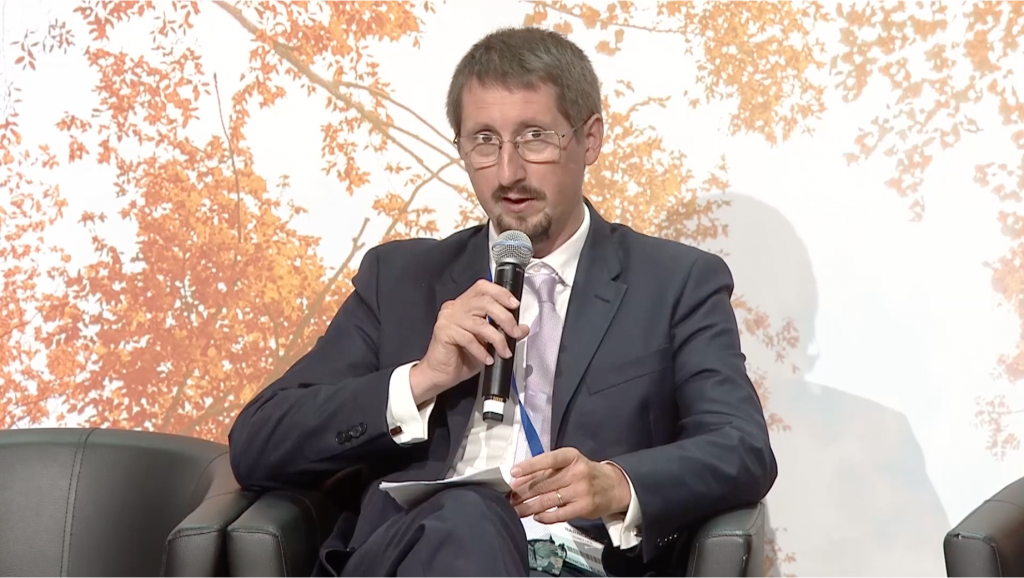
CvH: Thank you so much for highlighting this important work that the French biodiversity office is doing. And I think for all of us, it’s been always a very important example, to see the cooperation that exists different levels of France, between the national, subnational and local levels, and also the fantastic examples of that work in action. So, of course, one of the reasons why we are with the IUCN World Conservation Congress in France this time. I regret that we cannot go deeper into this topic, as the time unfortunately, is not on our side. So I have to close this session. But I really do hope that particular those who are present in Marseille can continue to conversation. And for those who are there virtually, we will certainly also reconnect soon again, to discuss further to share the outcomes of today’s summit widely. And with that, we also hope for new partnerships for action on green recovery and financing nature. So thank you very much to all the speakers
